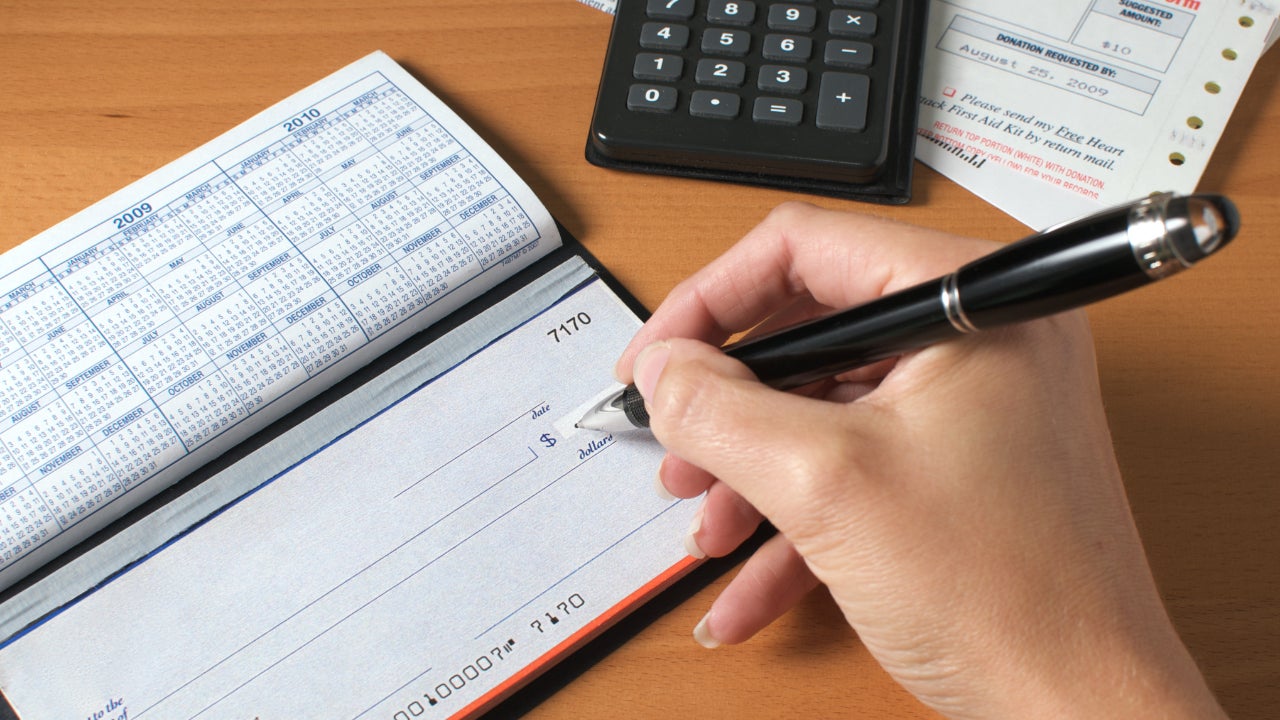How to endorse a check: A step-by-step guide

Though the use of paper checks may have dwindled, they remain a foundational element of basic financial transactions. You might receive a check as a gift, a reimbursement or even certain types of payments. Regardless how you’ll get it, you’ll need to know how to endorse it, as the check receiver, to ensure that the money is deposited into your account.
There are a few different types of endorsements, which serve specific purposes. Here’s a breakdown of each and how you can guarantee your check is processed correctly and securely.
Key takeaways:
- Endorse a check by signing the back of it in its designated area.
- Not endorsing a check or not completing the area could mean your check doesn’t clear.
- Banks require endorsements as a security measure to prove you’re the intended recipient of the check and prevent fraud.
Endorsing a check
Most checks have a dedicated space on the back for an endorsement, typically marked with a couple of lines at the top of the paper with instructions to “ENDORSE HERE.” This space is where you sign and make any additional notes about your check’s purpose.
For instance, you may want to say “for deposit only” if you’re depositing a check and not cashing it. If you’re passing that check onto someone else, you can put “Pay to the order of [name of recipient]” and then sign (endorse) your check.
Endorsements are usually required by financial institutions to make sure you are who you say you are and the check you’re endorsing is legally yours. Your signature and any other information, such as your checking account number, should fit within the designated endorsement area. Banks might not accept checks if endorsements aren’t complete and accurate.
Use a pen and if you’re adding special endorsements, make sure your writing is clear and simple.
Types of endorsements
Blank endorsement
The most basic form of endorsement, blank endorsements are a simple signature on the back of the check. The simplicity of this method comes with a drawback: If you were to misplace the check after endorsing it in this way — or if it gets stolen — anyone who could cash it.
Restrictive endorsement
A step up in terms of security is the restrictive endorsement. By writing “For deposit only” above your signature, you restrict the actions that can be taken with the check. In other words, if it ends up in the wrong hands, the check can only be deposited into a bank account, such as a checking account, preventing it from being directly cashed. You should also add your account number below “For deposit only.”
Special or full endorsement
Sometimes, you might want to transfer the check to another individual, in which case you’ll need to make a special or full endorsement. To do so, write “Pay to the order of [full name]” before your signature. That individual can then either cash or deposit the check. It offers flexibility but also requires trust in the person you’re assigning the check to.
For the benefit of (FBO) endorsement
An FBO endorsement indicates that the funds from a check should be used for the benefit of a named third party. Unlike a special or full endorsement, the original receiver of the check retains control of it, but earmarks the funds for another’s benefit.
For instance, if a minor receives a lawsuit settlement, the check might be addressed to the parent but intended for the child’s use. The parent would endorse the check as “FBO [child’s name]” to confirm that the funds, though deposited under the parent’s name, are strictly for the child’s needs.
Mobile deposit endorsement
With mobile banking on the rise, it’s more common than ever to make a mobile check deposit via a banking app. To make this deposit, write “For mobile deposit only,” after your signature. Your bank may also require you to write its name in the endorsement area. Only make a mobile deposit through your bank’s mobile app, and not a third party app, to protect your money.
Business endorsement
If a check is made out to a business, the endorsement should reflect the business name. Typically, a representative of the business writes the business name, their title and then signs, confirming the deposit into the business account.
Conditional endorsement
Conditional endorsements are less common but highly specific. If you want to tie the validity of a check to a certain condition, you’d write out the condition after stating who the check is payable to. An example would be writing “Pay to the order of [full name]” followed by, “Upon satisfactory completion of repairs,” and then your signature. This would signal that the check should only be accepted if the payee proves that they’ve completed certain repairs.
Many banks might refuse checks with conditional endorsements because of their complexity. It’s also possible that the condition could be disputed.
| Type of endorsement | Purpose | What to write |
|---|---|---|
| Blank endorsement | Converts check to cash-like instrument for the check’s recipient | Your signature |
| Restrictive endorsement | Limits use of the check to depositing only | “For deposit only” followed by your signature |
| Special or full endorsement | Transfers the check to another individual | “Pay to the order of [full name]” and your signature |
| FBO endorsement | Redirects funds to benefit a third party | “FBO [third party’s name]” and your signature |
| Mobile deposit endorsement | For checks deposited via mobile bank app | “For mobile deposit only” and your signature |
| Business endorsement | For depositing checks made out to businesses | Business name, your title and your signature |
| Conditional endorsement | Makes check valid only upon a condition being met | “Pay to the order of [full name] upon [stated condition]” and your signature |
Bottom line
Generally, endorsing a check is quite simple, and it always requires you to sign in a designated area. There are a few different methods of endorsement worth understanding, though, that carry different levels of flexibility and security.
As a financial security rule, only endorse the check when you’re ready to deposit it, so there’s less room for it to get lost and end up in the wrong hands.
Why we ask for feedback Your feedback helps us improve our content and services. It takes less than a minute to complete.
Your responses are anonymous and will only be used for improving our website.






